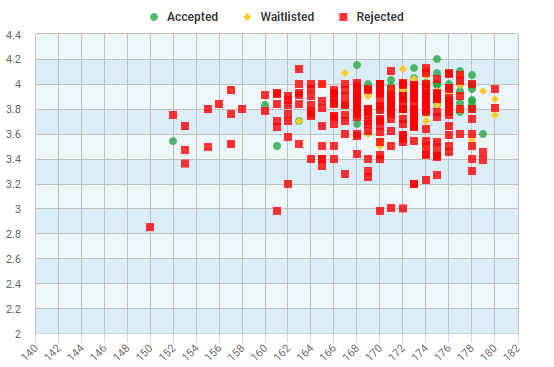FIU Law School
General Info

The College of Law at Florida International University, located in Miami, FL in the United States is one of the university's 27 schools and colleges and was founded in 2000. It later opened its doors in August of 2002 and received provisional accreditation from the American Bar Association in August of 2004, and was granted full accreditation on December 1, 2006. The inaugural class graduated on May 22, 2005. In March of 2007, the FIU College of Law received its first national ranking in U.S. News & World Report. FIU was ranked in the third tier of the four tiers of law school, marking the first time in several decades that a new law school has been so highly ranked. In April of 2007, it was revealed that FIU Law graduates passed the February 2007 Florida bar exam with a 94 percent passing rate, the highest in the state of Florida.
Contact information
- (Website) https://www.law.fiu.edu/
- (Admissions Dean) lawadmit@fiu.edu
- (Location) Miami, FL
FIU Law School Admissions
FIU Law School is considered a Moderately Competitive law school, which accepts only 30% of its applicants. Comparatively, Fiu is Lower than the average cost for law school.
| Applications | Offers | Matriculated | |
|---|---|---|---|
| Class of 2029 | 1887 | 551 (29.20%) | 136 (7.2%) |
| 25% | Median | 75% | |
| GPA | 3.14 | 3.63 | 3.76 |
| LSAT | 151 | 156 | 158 |
Tuition And Financial Aid
| In-State Resident | Non-Resident | |
|---|---|---|
| Full Time | $21,406 | $35,650 |
| Part Time | $14,501 | $24,150 |
Living Expenses
- Living on-campus: $26,676
- Living off-campus: $26,676
- Living at home: $15,128
Important Dates
- Early Decision 1: N/A
- Early Decision 2: N/A
- Regular Decision: 05/01
- Application Fee: $20
FIU Law School Admissions Predictor Tool
FIU Law School COMPARISON TOOL
FIU Law School


FIU Law School Community
FIU Law School is considered to have a Somewhat Favorable student to faculty ratio. The average class size for 1L sections is approximately Average compared to other law schools. Student diversity at Fiu is Above Average.
Student body
Faculty Statistics
- Full Time: 30
- Part Time: 39
Faculty
- # Female Faculty: 33
- # Minority Faculty: 39
Ratio
16.0 Students
1 Faculty
Housing Options
- On Campus Housing: Yes
- Graduate Housing: Yes
- Law Specific Housing: Yes
FIU Law School Curriculum
The size of 1L sections affects the quality and consistency of teaching in law schools. Generally with smaller 1L section sizes, students receive more individualized attention. FIU Law School 1L section size is 62% smaller than law schools in Florida and 53% smaller than all PUBLIC law schools.
1L Section Size Comparison
Positions Available in Advanced Courses
- Simulation Courses: 463
- Faculty Supervised Clinics: 77
Students Involved in Advanced Activities
- Field Placements: 105
- Law Journals: 54
- Moot Court/Mock Trials: 0
Attrition Rates
- First Year: 12.3%
- Second Year: 0.7%
- Third Year: 0.0%
- Fourth Year: 0.0%
FIU Law School Employment
Deciding to attend law school requires a large financial investment with the goal of securing employment upon graduation. The FIU Law School class of 2024 had an employment rate of 93% with 0% pursuing an additional degree.
Employment Comparison
In 2024, 96.6%% of students reported their employment status 9-months after graduation.
Type of Employment
- Law Firms: 59.0%
- Business: 19.0%
- Government: 17.0%
- Public Interest: 2.0%
- Academia: 2.0%
- Florida: 91%
- District of Columbia: 2%
- New York: 1%
Bar Passage Rates
- Reporting: 96.6%
- First Time Takers: 146
- Average School: 79.4%
- Average State: 72.1%
- Pass Difference: 7.3%
Top Bar Jurisdiction
- Florida: 72.1%
- Passed: 112 of 141 (79.4%)
- State Average: 72.1%
- Difference: 7.3%
